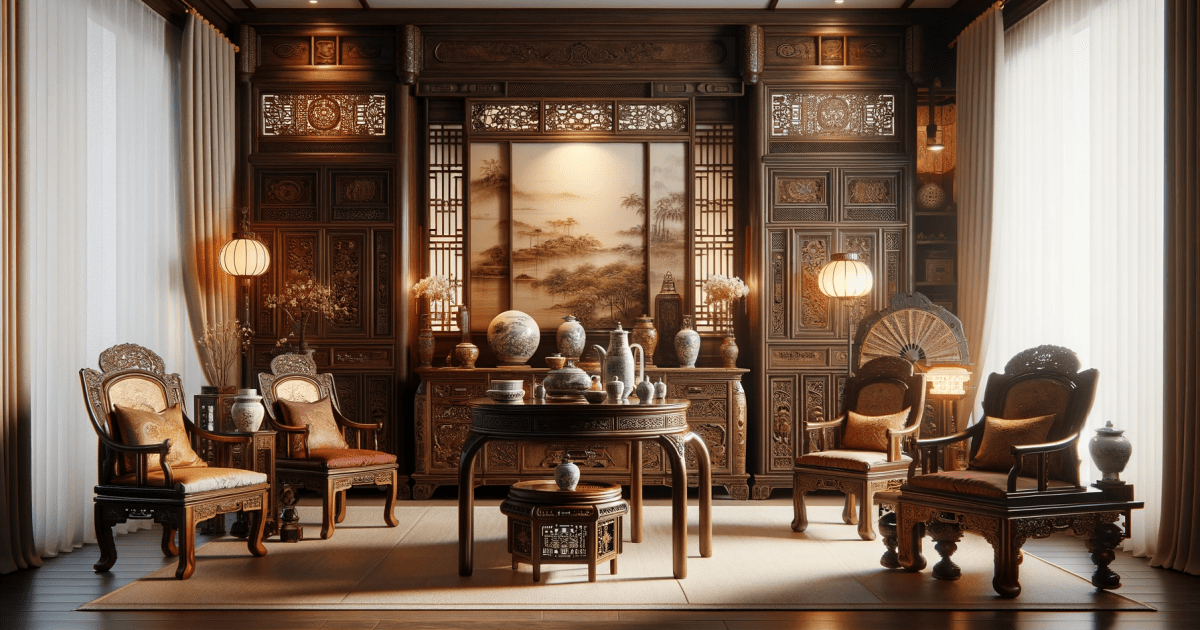Mahogany wood grain features a distinct pattern and color that adds elegance to any space. Mahogany is known for its rich reddish-brown hue and straight, interlocking grain, which gives it a unique and stylish appearance.
The fine texture of mahogany wood enhances its visual appeal, making it a popular choice for high-end furniture and flooring. Apart from its beauty, mahogany is also highly durable and resistant to decay, making it suitable for both interior and exterior applications.
Its natural luster can be further enhanced with the right finish, resulting in a stunning and timeless aesthetic. Whether used in traditional or modern designs, mahogany wood grain brings warmth and sophistication to any environment.

Credit: www.hawaexpo.com
The Origin Of Mahogany Wood
Mahogany wood, prized for its rich grains and durability, originates from tropical forests in Central and South America. The distinct mahogany wood grain features a smooth texture and deep reddish-brown color, making it a popular choice for furniture and decorative items.
Mahogany wood is highly prized for its rich, warm color and beautiful wood grain. But have you ever wondered where this exquisite wood comes from? In this section, we will delve into the history and natural characteristics of mahogany wood to gain a better understanding of its origins.
History of Mahogany
Originally native to the tropical rainforests of the Americas, mahogany wood has a long and storied history. Dating back to the 16th century, it became highly sought after for its durability and attractive aesthetics. This made it a favored material for furniture makers, craftsmen, and shipbuilders alike.
During the 17th and 18th centuries, mahogany wood began to be imported to Europe, where it gained immense popularity among the aristocracy. Its use in the construction of luxury furniture pieces and paneling became a status symbol, solidifying its position as a highly desired wood.
Natural Characteristics
Mahogany wood possesses several distinctive natural characteristics that contribute to its appeal. One of its most notable features is its deep, reddish-brown color that darkens and mellows with age. This natural patina adds an unparalleled depth to furniture and enhances the overall visual appeal.
The wood grain of mahogany is also unique, often exhibiting a straight, interlocking pattern that adds visual interest. This grain pattern can vary depending on the specific species of mahogany, with some showcasing more pronounced grains than others.
Additionally, mahogany is known for its excellent workability and stability. Its straight, even grain allows for smooth cutting and shaping, making it a favorite among carpenters and woodworkers. The wood also has natural resistance to rot and decay, further enhancing its longevity and durability.
In conclusion, understanding the origin and natural characteristics of mahogany wood can help us appreciate its beauty and value even more. From its fascinating history to its rich color and distinctive grain pattern, mahogany wood is truly a treasure of the natural world.
Now you can make any bold and important points you want!
Applications In Furniture Making
Mahogany wood is highly regarded for its impeccable beauty, durability, and versatility. It boasts a rich reddish-brown color and distinctive grain patterns that make it a popular choice for furniture making.
Traditional Use
Mahogany has a long-standing history in furniture making, particularly in traditional styles and designs. Its warm and inviting color brings an air of elegance to any space, making it a preferred choice for classic and formal settings.
With its exceptional density and strength, mahogany wood is well-suited for crafting sturdy and long-lasting furniture pieces. Its ability to resist warping and cracking makes it ideal for intricate carvings and detailed craftsmanship.
In traditional furniture making, mahogany has been widely used for crafting dining tables, chairs, cabinets, and bed frames. The wood’s natural luster and smooth surface contribute to the timeless appeal of these pieces, allowing them to be passed down through generations.
Contemporary Design Trends
In recent years, mahogany wood has also found its place in contemporary design aesthetics. Designers and homeowners are embracing its versatility and incorporating it into modern and minimalist designs.
Mahogany’s rich color and distinct grain patterns add warmth and depth to contemporary spaces, creating a harmonious balance with cooler materials such as glass and metal. Its natural beauty shines through even in sleek and streamlined furniture pieces.
In contemporary furniture making, mahogany is often used for crafting coffee tables, sideboards, media consoles, and accent chairs. These pieces effortlessly blend classic elegance and contemporary functionality, making them a striking focal point in any modern interior.
Whether it’s displayed in a traditional or contemporary setting, mahogany wood grain is sure to make a lasting impression. Its beauty and durability have stood the test of time, making it a timeless choice for furniture making.
Sustainability And Conservation
Mahogany wood grain is renowned for its stunning beauty and durability, making it a popular choice for furniture, flooring, and decorative items. As the demand for mahogany continues to grow, it’s essential to consider its sustainability and conservation efforts to preserve this precious resource for future generations.
Challenges In Conservation
The conservation of mahogany wood grain faces numerous challenges, including illegal logging, deforestation, and unsustainable harvesting practices. The high demand for mahogany has led to a significant decrease in natural habitat, threatening the existence of this valuable species. As a result, the conservation efforts must focus on addressing these challenges to prevent further depletion of mahogany forests.
Eco-friendly Alternatives
Amidst the challenges in mahogany conservation, exploring eco-friendly alternatives becomes crucial. Utilizing sustainable forestry practices, such as selective logging and reforestation, can help replenish mahogany forests. Additionally, promoting the use of reclaimed mahogany wood and certified sustainable sources can reduce the environmental impact and ensure the longevity of this exquisite wood grain.
Maintaining Mahogany Furniture
Maintaining your mahogany furniture is crucial to preserve its rich wood grain and luster.
Cleaning And Polishing
Regularly dust mahogany furniture with a soft cloth to prevent buildup and maintain its shine.
Use a mild wood cleaner to wipe down the surface and remove any dirt or stains gently.
- Always follow the wood grain when cleaning to avoid scratches.
- Apply a high-quality mahogany polish periodically to keep the wood looking its best.
Preventing Damage
Avoid placing mahogany furniture in direct sunlight to prevent fading and warping.
Use coasters or placemats to protect the surface from heat and moisture damage.
- Rotate accessories and decorative items regularly to prevent uneven fading.
- Keep the furniture away from heating vents or radiators to preserve its integrity.
Mahogany In Interior Design
Mahogany is a luxurious wood known for its rich color and distinct wood grain, making it a popular choice in interior design.
Enhancing Aesthetics
Mahogany adds warmth and sophistication to any space, creating a timeless elegance that can elevate the overall aesthetic of a room.
Pairing With Other Materials
Mahogany pairs well with a variety of materials such as metal, glass, and marble, allowing for endless design possibilities.
Frequently Asked Questions On Mahogany Wood Grain
What Is The Grain Pattern Of Mahogany?
The grain pattern of mahogany is typically straight, although it can also exhibit a wavy or curly pattern. This type of wood has distinctive diagonal lines and a rich reddish-brown color, making it highly sought after for furniture and decorative woodworking projects.
How Can You Tell Mahogany Wood?
To tell if it’s mahogany wood, look for its reddish-brown color, straight grain, and high density. It is often used in high-quality furniture and has a unique, luxurious appearance.
What Is The Difference Between Oak Grain And Mahogany Grain?
Oak grain has a lighter color and prominent grain pattern. Mahogany grain is darker with a more uniform and consistent appearance. Both offer unique aesthetics for furniture and decor styles.
What Wood Grain Is Similar To Mahogany?
Sapele wood grain is similar to mahogany. It is an affordable alternative with a similar reddish-brown color and fine texture.
Conclusion
Mahogany wood grain offers a timeless and elegant appeal, making it a popular choice for furniture and interior design. Its rich, deep hues and intricate grain patterns add warmth and sophistication to any space. With its durability and versatility, mahogany wood grain continues to be a sought-after material for creating beautiful, enduring pieces.



2 thoughts on “Mahogany Wood Grain: Exploring Elegance”